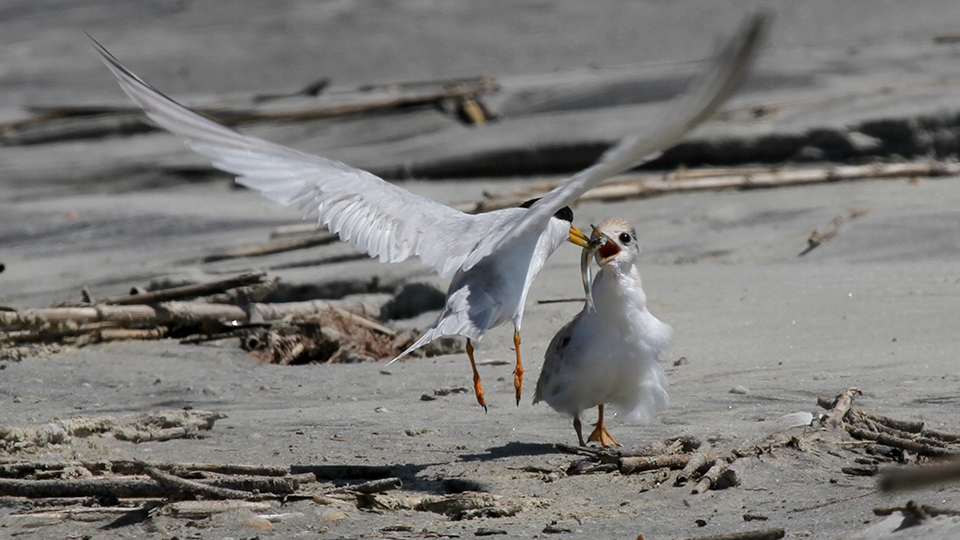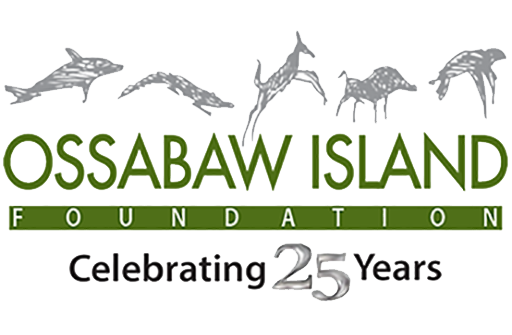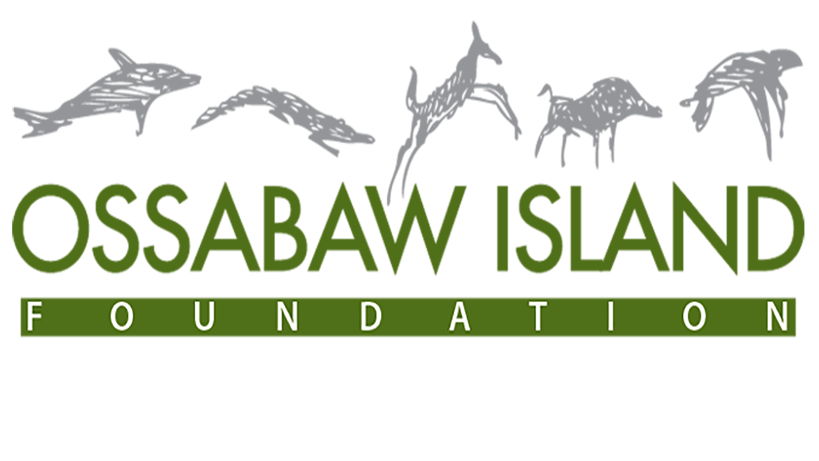
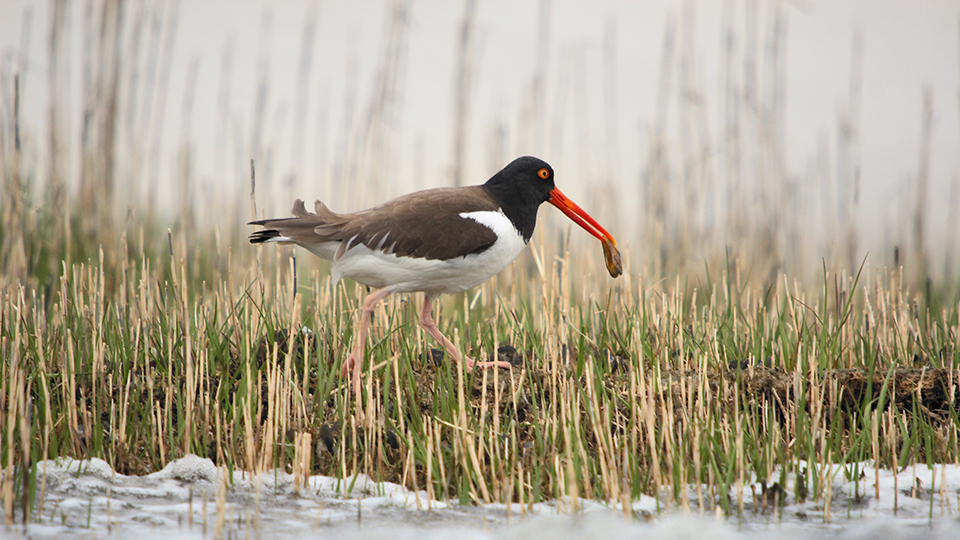
Ossabaw Island is Designated an “Important Bird Area” (IBA)
by Audubon’s Georgia IBA Program
Ossabaw Island’s diverse and pristine environment provides important foraging, roosting and nesting habitat for an extensive variety of resident, nesting and migratory birds. In 2007, Ossabaw Island was recognized as one of Georgia’s “Important Bird Areas” (IBA) by the Audubon Society. Ossabaw’s biologically rich landscape provides birders with an extraordinary bird watching platform and ornithologists with a unique field experience.
The Ossabaw Island Foundation (TOIF) invites ornithologists and students of ornithology interested in the study of anatomy, behavior, ecology, evolution, physiology, conservation, or other aspects of bird biology to submit a proposal.
For additional information contact:
Elizabeth DuBose, Executive Director, Ossabaw Island Foundation
912-344-3900
elizabeth@ossabawisland.org
Salt Marsh & Tidal Creeks
Foraging Habitat
Ossabaw Island’s energy rich salt marshes and tidal creeks are nursery grounds for a wide variety of fish and shellfish. These nurseries are important foraging grounds for egrets, herons, ibis, wood storks, as well as other migratory and resident wading birds and water fowl. (Ossabaw Island-Ornithological Summary, Audubon Society, 2013.)
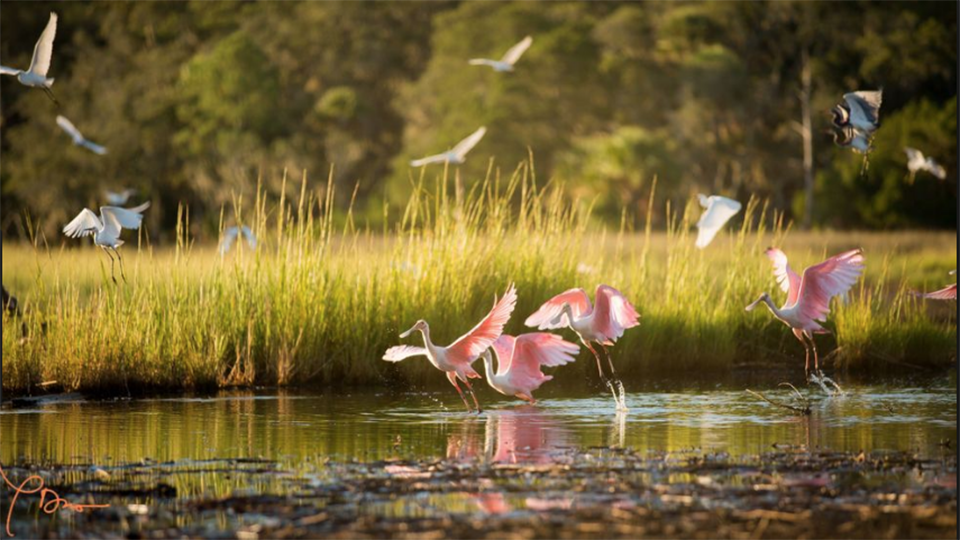
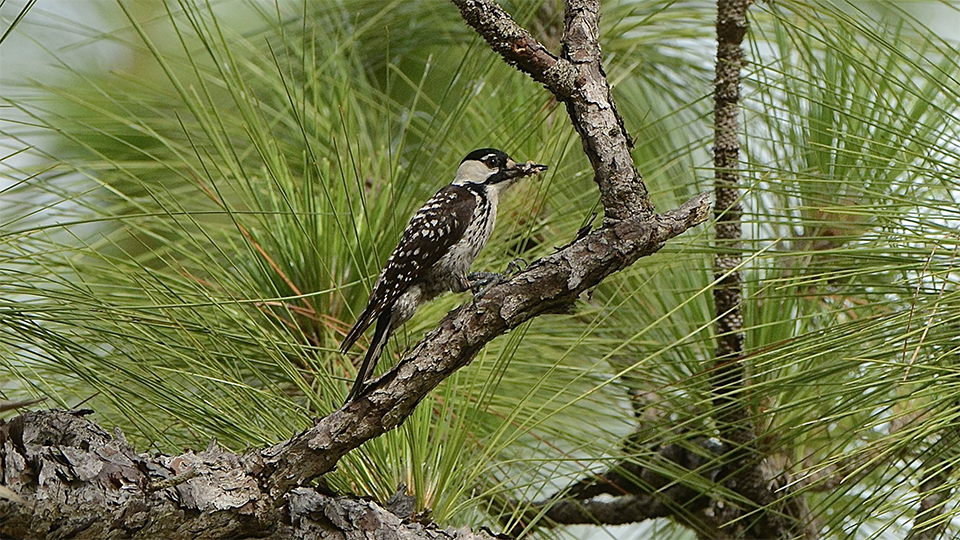
Maritime & Long Leaf Pine Forests
Resident & Migratory Species
Ossabaw island’s maritime and long leaf pine forests comprise 36% (9,000 acres) of the island. It is prime foraging and nesting habitat for a wide variety of birds from the endangered red-cockaded woodpecker to the Near Threatened (population decreasing) painted bunting. Ossabaw’s woodlands, along with Georgia’s sister barrier islands, support the U.S. eastern population of painted buntings.
Ossabaw’s maritime forest consists mainly of live, water and laurel oaks, and slash and loblolly pines. Eastern red cedar and cabbage palm are found in the upper marsh border. The rich understory of saw palmetto, wax myrtle, and yaupon, along with, catbrier, pepper-vine, and muscadine vines bear fruit that provides important food energy to resident and migrating songbirds. (Ossabaw Island-Ornithological Summary, Audubon Society, 2013.)
Interior Fresh Water Ponds
Rookeries
Interior fresh water marshes, with cattails and bulltongue are home to alligators, frogs, and small fish. Wading birds are common, and migrating waterfowl are also seen using the habitat. The island has noisy bird rookeries, where herons roost and raise their young. Freshwater ponds provide refuge to migrating waterfowl using the Atlantic flyway. (Ossabaw Island-Ornithological Summary, Audubon Society, 2013)
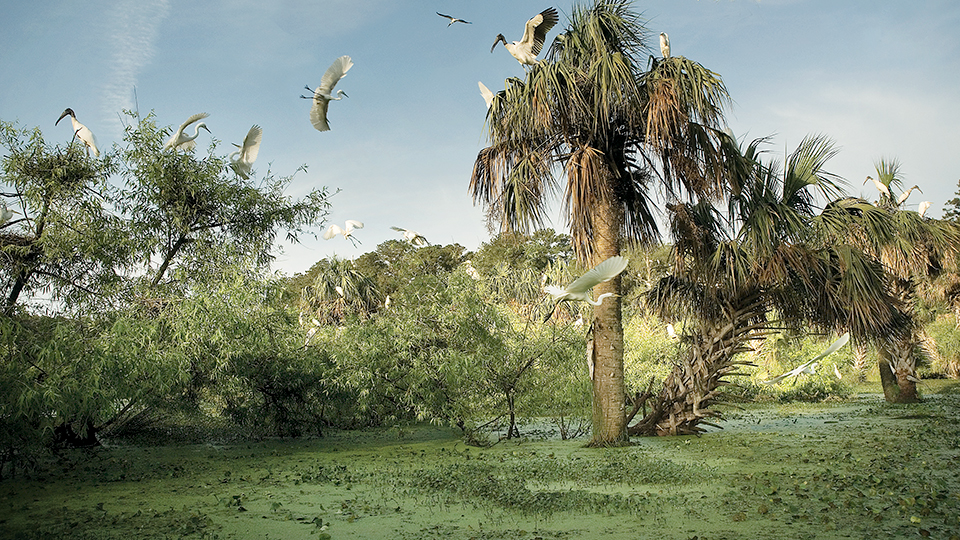

Upper Dune Area
Nesting Habitat
Several birds nest on the upper beaches. These include royal terns, least terns, American oyster-catcher, Wilson’s plover, and willet. (Ossabaw Island-Ornithological Summary, Audubon Society, 2013.)
Intertidal Zone & Beaches
Foraging Habitat
The intertidal zone is prime foraging habitat for birds that feed on mollusks, crustaceans and other invertebrates at low tide. These include the American Oyster-catcher, semipalmated plover, piping plover, Wilson’s plover, black-bellied plover, ruddy turnstone, willet, American knot, least sandpiper, semipalmated sandpiper, western sandpiper, and sanderling. Several species feed below and in the intertidal zone on small fish. These include common terns, least terns, royal terns, and black skimmers. Herring gull, ring-billed gulls, black vultures, and fish crows are common scavengers of the beach and dune areas. (Ossabaw Island-Ornithological Summary, Audubon Society, 2013.)
